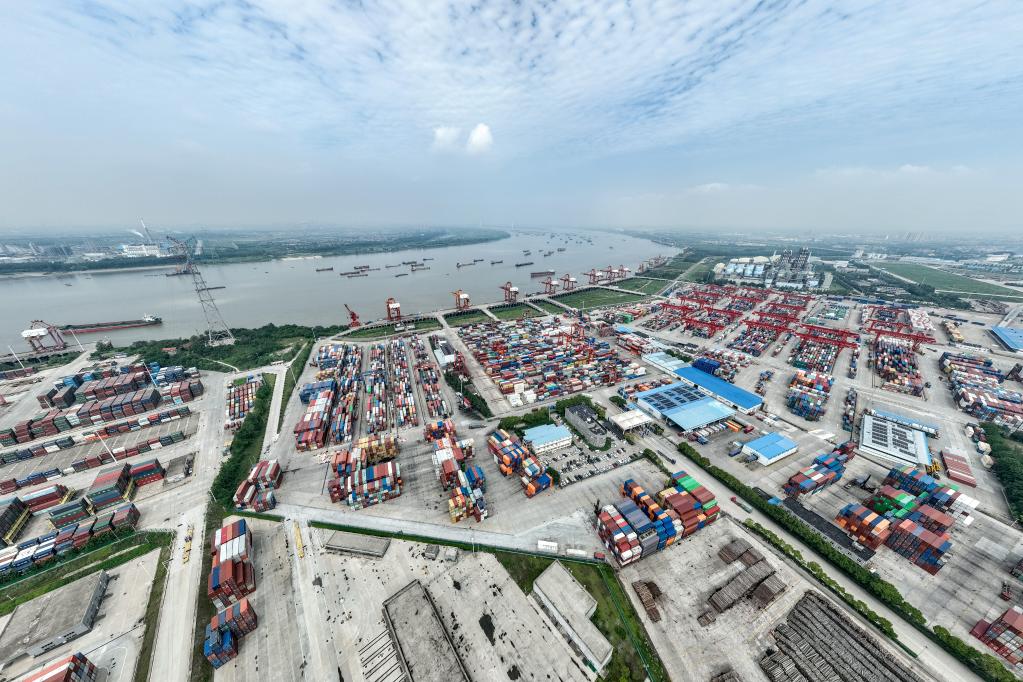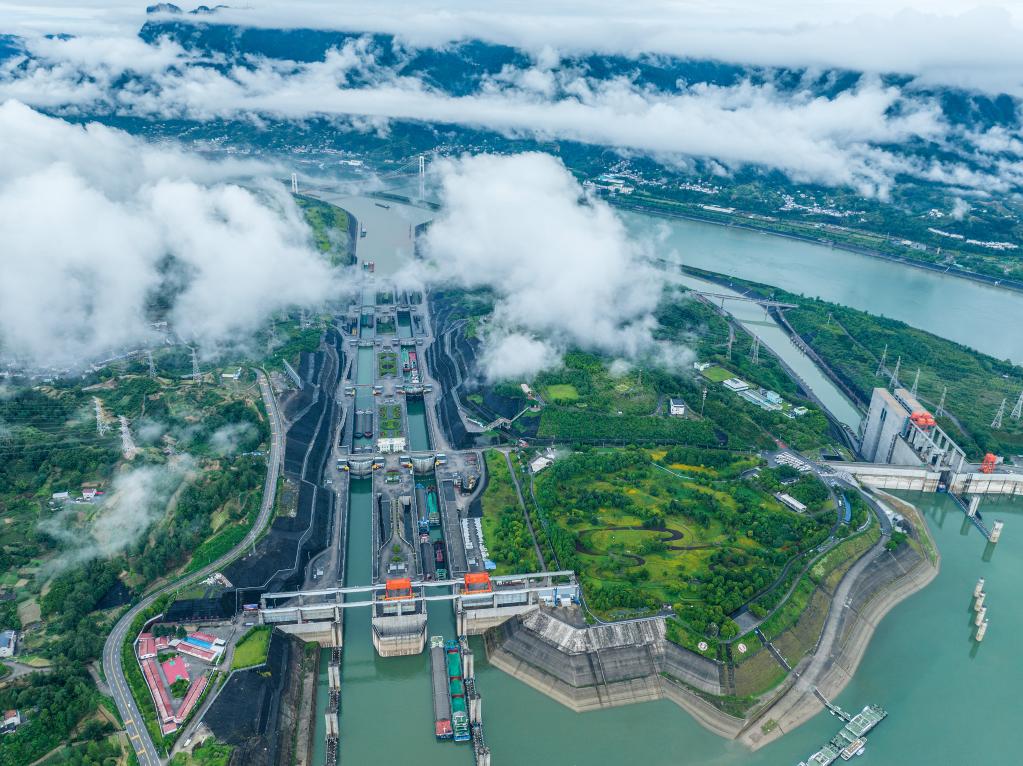In the new era, the China research bank and the Yangtze River have basically formed a modern "golden waterway"
Xinhua News Agency, Wuhan, July 1st Title: The trunk line of the Yangtze River has basically formed a modern "golden waterway"
Xinhua News Agency reporters Hui Xiaoyong, Xu Haibo and Li Siyuan.
With a throughput of 3.59 billion tons, there are 15 large ports with a capacity of 100 million tons, and navigation and trade with more than 100 countries or regions … … In recent years, the development of shipping in the Yangtze River has entered the fast lane, and the trunk line of the Yangtze River has basically formed a "golden waterway", constantly promoting the high-quality development of the Yangtze River Economic Belt.
At one time, the coastline and ports of the Yangtze River were occupied and abused indiscriminately, occupied but not used, occupied more and used less, and used extensively, and the advantages of the Yangtze River in water transportation were not fully exerted. In order to solve this problem, in recent years, the provinces and cities along the Yangtze River and the relevant institutions in the Yangtze River basin have adhered to the problem orientation, systematic policy, and addressed both the symptoms and the root causes. The regulation of the Yangtze River coastline has been comprehensively promoted, 1,361 illegal docks have been completely rectified, illegal sand mining has been basically eliminated, illegal shipping has been rectified, the coastline has been reshaped, and green ecological corridors on both sides of the strait have gradually taken shape.
Li Jiang, deputy director of the Yangtze River Waterway Administration of the Ministry of Transport, said that the navigation capacity of the Yangtze River has been significantly improved, and the trunk lines have basically formed a modern "golden waterway". The high-grade waterway of the trunk branch of the Yangtze River has a mileage of tens of thousands of kilometers, and 50,000-ton seagoing vessels directly reach Nanjing, 10,000-ton vessels directly reach Wuhan, 3,000-ton vessels directly reach Chongqing and 2,000-ton vessels directly reach Yibin, thus forming a water expressway that connects Sichuan, Chongqing, Hunan, Hubei, Jiangxi and Anhui, and reaches Jiangsu, Zhejiang and Shanghai. At present, there are 15 100-million-ton ports along the Yangtze River trunk line.

On June 6, 2023, the ship was sailing in the waters of Yangluo Port in Wuhan, Hubei Province. Xinhua News Agency reporter Wu Zhizun photo
On June 30th, Wuhan Yangluo Port, containers piled up like a mountain, gantry cranes and bridge cranes kept rising and falling, and a liner full of auto parts and other goods was preparing to set sail for Busan, South Korea. Not far away, the hot metal combined transport station, a Central European train full of electronic products, honked its horn and set off for Europe. Today, Yangluo Port has achieved "shipping eastward into the sea and trains westward into Europe". In 2022, the container throughput exceeded 2 million TEUs.
Smooth the "aorta" and clear the "capillary" simultaneously, and the large, medium and small ports are organically connected to expand the "width" of the Yangtze River. According to statistics, the navigation mileage of the Yangtze River system is about 70,000 kilometers, accounting for 70% of the national inland navigation mileage.
Huangshi City, Hubei Province, which is "the city because of the port", has set up Huangshi New Port in order to make the "golden coastline" get the "golden income", jumped out of the single port mode, and actively built a comprehensive transportation hub by integrating the advantages of regional roads, railways, waterways and aviation. In 2022, the throughput reached a record high of 29.3 million tons. Huangshi New Port is building eight berths of 20,000 tons, which will become the largest single port in the middle and upper reaches of the Yangtze River after it is put into operation.
Like Huangshi New Port, more and more railways, highways and ports are "hand in hand". According to statistics, 15 major ports along the Yangtze River have realized railway entry. River-sea combined transport, hot metal combined transport and other multimodal transport set up a three-dimensional comprehensive traffic corridor in the Yangtze River.

On June 18, 2023, the ship passed through the Three Gorges Lock and the ship lift in an orderly manner. (photo by Wang Gang)
The navigation capacity of the Three Gorges Shiplock has been further improved. Since its opening in 2003, it has passed over 990,000 ships, 1.91 billion tons of cargo and more than 12 million passengers in 20 years. Fill a 40-foot container with 1.91 billion tons of goods, which can circle the equator 22.4 times.
Shore power coverage, garbage landing, wharf improvement, ecological waterway … … While the freight volume is increasing, green shipping is also advancing steadily. At the Mao Ping Cruise Terminal in Zigui Port, upstream of the Three Gorges Dam, although there is no pungent smell of diesel oil or engine roar, the tourist passenger ships docked here are brightly lit by shore power. With a touch of the mobile phone, a ship will soon come to receive garbage and wastewater, and then it will be transported ashore through seamless docking, and finally zero pollutants from the ship will enter the river.
Water express, industry prosperity. According to the statistics of the Yangtze River Waterway Bureau, in 2022, the throughput of trunk lines of the Yangtze River reached 3.59 billion tons, and the total economic output of provinces and cities along the Yangtze River Economic Belt accounted for 46.5% of the whole country, an increase of 1.4 percentage points over 2015, forming five world-class industrial clusters of electronic information, high-end equipment, automobiles, household appliances and textiles and garments.